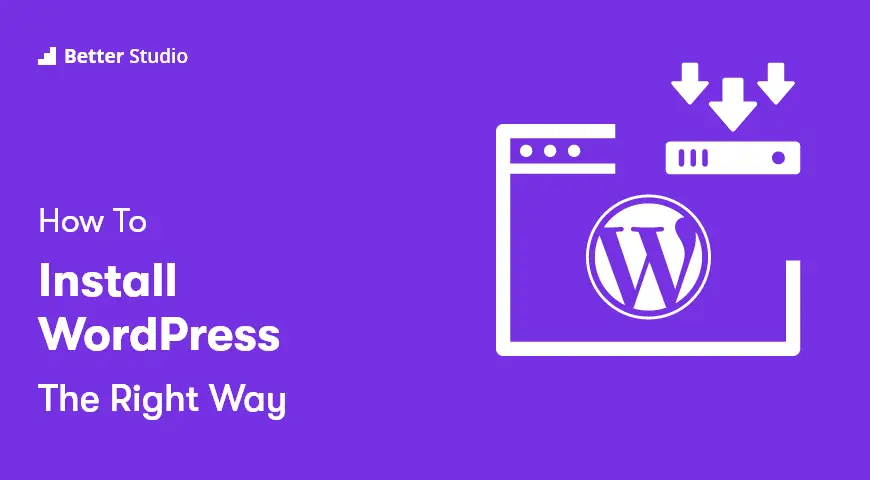As you probably know, WordPress is one of the most popular free CMS on the Internet. More than 33% of the websites on the internet are designed and built with WordPress.
The main reason behind this success is its simplicity and this reason alone made beginners and advanced users install WordPress. Therefore, in this article, we would like to discuss the installation process of WordPress.
There are many reasons why WordPress is popular, and one of them is its ease of installation. Installation should not take longer than five minutes. In contrast, most WordPress hosting providers offer tools that automate the installation process. As a result, the whole process is streamlined even further.
Generally, installing WordPress only takes a few clicks. In this article, we would like to teach you how to install WordPress manually and by the application. Before anything, we need to review the requirements for installing WordPress.
WordPress Installation requirements
There are some requirements to install WordPress. Every website needs a domain and a host to run.
Hosting plan
The host is the environment you store the website. The space required depends on your needs. Before purchasing the host, make sure it supports the following applications:
- PHP version 7.3 or above
- MySQL version 5.6 or above – MariaDB version 10.1 or above
- Supports HTTPS
These are the requirements mentioned on the official WordPress website. WordPress developers recommend using an Apache or Nginx server to install WordPress. Although, any server that supports PHP and MySQL is enough for installing WordPress.
It is possible to install WordPress on lower versions of PHP and MySQL. In this case, security might not be as strong as it would be on higher versions. Consequently, the website may be vulnerable. It is possible for hackers to easily access websites using an older version of WordPress.
Domain name
The domain name is the address of your website. This name can be related to your business. Besides, personal website owners usually use their name as the domain name.
How to Install WordPress Manually?
We have mentioned above that there are two methods of installing WordPress. Manually and by using the application. To install WordPress manually, follow the steps below:
Download WordPress the Core Files
The first step to installing WordPress is downloading the core files. Simply, go to the official WordPress website.
- If you are going to install WordPress on a remote server, once the download is finished, unzip the files.
- But if you are going to use an FTP client, there is no need to unzip the downloaded files.
- If you have access to the server and using the console is easier for you. To download WordPress directly on the webserver, use wget.
wget https://wordpress.org/latest.tar.gzThen to unzip the files, use the following command:
tar -xzyf latest.tar.gzWordPress files will be extracted in the Extract folder. Exactly where latest.tar.gz is downloaded.
Create WordPress Database
The majority of hosting providers offer WordPress databases as part of their packages. Ensure that your host came with a WordPress database by contacting your host. Alternatively, you can create a WordPress user and a database following the steps below.
Create the Database and User with phpMyAdmin
phpMyAdmin is the best application to create the WordPress database and assign a user to it. To create a database and its user with Plesk and cPanel, read the “Creating database for WordPress” article on the official WordPress website, all the necessary steps are explained.
If you only have a database, use it to install WordPress. But make sure you assign a unique table prefix to WordPress.
In this article, we discuss how to create the database and user in phpMyAdmin version 4.4 and above. If your phpMyAdmin interface is different don’t worry, the process is still the same.
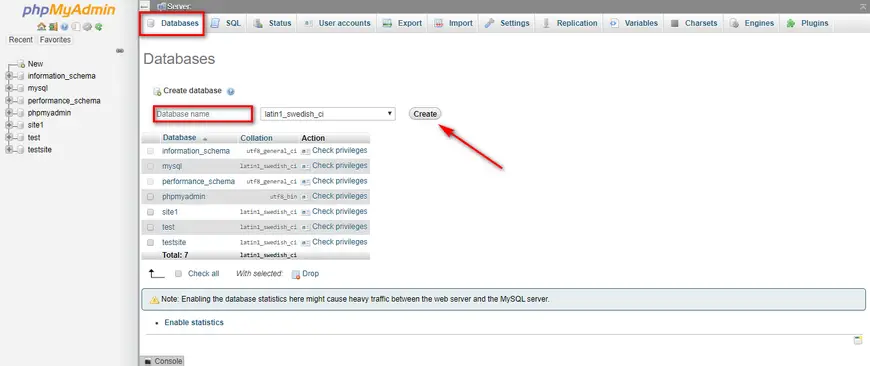

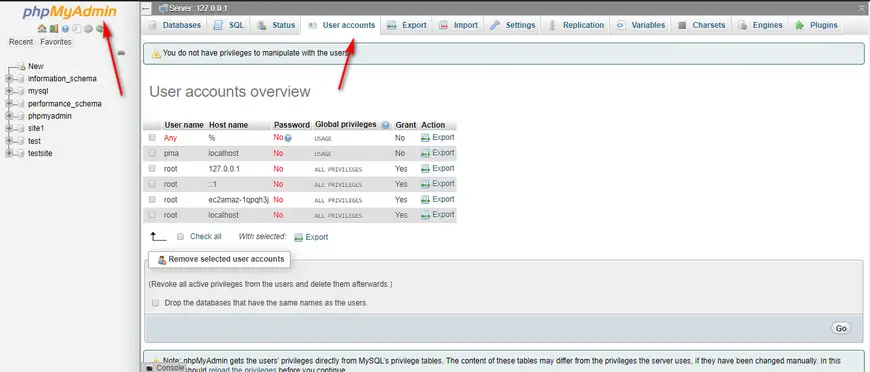

- To open the program, from the hosting panel click on phpMyAdmin.
- From the toolbar on top, click on the Database. Then, click on Create one.
- Choose a name. It can be anything. We recommend choosing a name with an underline (_).
- Select _utf8 from the Collation menu.
- Click on the phpMyAdmin logo to go back to the homepage.
- From the toolbar on top, click on Users.
- Scroll down and click on Add User.
- Choose a name. We recommend WordPress, but it’s totally up to you. From the drop-down menu select Use Text Field.
- Choose a password for the user. Again, make sure the Use Text Field is selected. It’s a good idea for the password to be a combination of characters, words, numbers, etc.
- Write down the username and password in a notepad.
- Leave Global Privileges to its default configuration.
- Click on Go.
- Go back to the Users page. Underneath the created user, click on Edit Privileges.
- From top click on Database.
- In the Database-specific privileges, select the WordPress database and click on Go.
- Click on Check all. Then, click on Go.
- The server name should be visible on top now.
Configure wp-config.php
The next step in manually installing WordPress is configuring the wp-config.php file. In this step, you must connect WordPress to the newly created database.
Go to the folder you extracted the WordPress files. Look for the wp-config-sample.php file. Rename it to wp-config.php. Open the file in an editor.
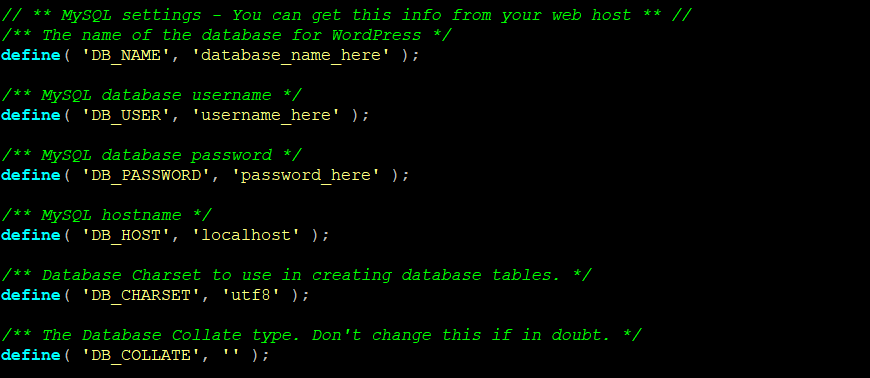

Enter the created database credentials.
- DB_NAME: Name of the database.
- DB_USER: The created user.
- DB_PASSWORD: The chosen password.
- DB_HOST: This is usually set to the localhost.
- DB_CHARSET: Don’t touch this option. Leave it as it is.
- DB_COLLATE: Leave it blank.
Then enter the Secret Value underneath.
Finally, save the file.
Upload the Files
The next step is to upload WordPress files. In this step, you must decide where to upload your website.
- In the main path – example.com
- In a folder – example.com/blog
Upload the Files in the Main Path
Using an FTP client is the best method to transfer the WordPress files to the webserver. Simply upload every file in the WordPress directory to the root of the webserver.
If the WordPress files are already in the server, and you are going to use Shell to install them. You must upload WordPress anywhere other than the root directory.
Upload All Files in a Subdirectory
If you are planning to upload the files to a sub-directory, rename the WordPress folder to something else. Then use an FTP client to upload the files to your root directory.
Run WordPress Installation Page
The last step is to run the files and install WordPress.
If the files are uploaded in the root directory, open the following URL in your browser:
http://example.com/wp-admin/install.phpIf the files are uploaded in a sub-directory, open the following URL in your browser:
http://example.com/blog/wp-admin/install.phpOnce you open either of the URLs in your browser, you must enter database information.
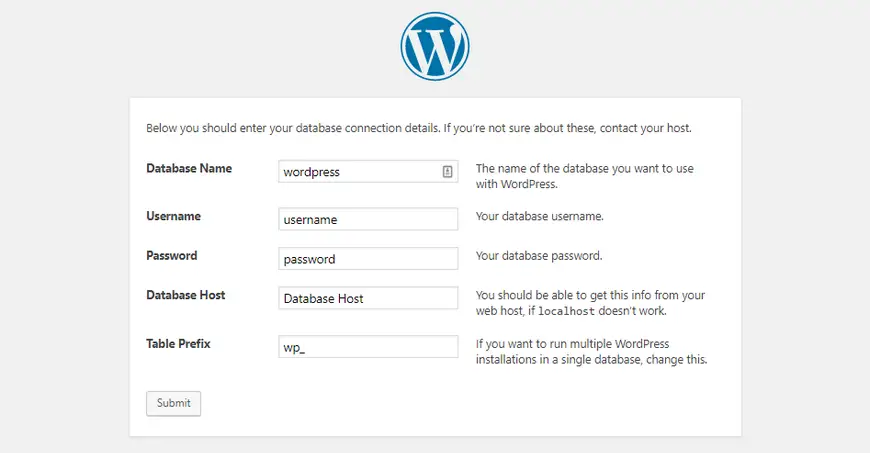

After entering this information, click on Submit. On the next page, you must enter the information on your website like website title, username, password, etc. Finally, click on install WordPress.
If you have followed the instructions correctly you will be redirected to the login page.
How to Install WordPress Using Softaculous?
One of the programs that automatically can install WordPress is Softaculous. This program is popular for installing other applications as well.
To begin, log in to your hosting panel (cPanel). Look for WordPress Installer or Softaculous. By clicking on either of them Softaculous will open.
In the next step, you must choose where to install WordPress and also pick HTTP or HTTPS. Then, you must pick a domain name. Most users install WordPress in the main directory. For example, example.com. In this case, make sure the directory is empty. Then, scroll down to see other configurations.
In this section, you must enter the site title and description. You can change these later on. Then, select the domain name, password, and a WordPress email.
By default, this program chooses a username and password for you. However, you can change them individually.
In the Email section, make sure you have typed in the correct email address. Otherwise, when you forget your password you won’t be able to reset your WordPress password.
Finally, click on install to begin the process.
Once the installation process is finished you will see a success message. Also, there will be a link to redirect you to the WordPress dashboard.
How to Install WordPress with QuickInstall?
The QuickInstall program is another popular program to automatically install WordPress. This program is used by many big companies like HostGator. QuickInstall uses cPanel to install WordPress.
First, log in to your cPanel. Then scroll down until you see the Software section. Click on QuickInstall.
On the next page, click on WordPress to start the process.
On the next page, from the drop-down menu, choose your domain.
In the next step, enter your website details like title, domain name, username, password, and email.
Click on Install once everything is set.
Once the installation process is finished you should be able to see the following page. Finally, to enter the WordPress dashboard click on Login.
How to Install WordPress with Fantastico?
To install WordPress with Fantastico, from your hosting panel go to the Software section. Then, click on the Fantastico icon.
In the opened page, click on Blogs on the left-hand side. Find WordPress and click on Install. Then, click here to install WordPress. Look at the image above.
In the next step, you must enter your website details. But first, choose a domain name.
In the Administrator Details, enter the Admin credentials and click on Submit.
Then, Fantastico begins to install WordPress. Once the installation is completed, you will receive a message.
How to Install WordPress on localhost?
Installing WordPress on localhost allows you to run the popular CMS without purchasing a domain name or a host. Then, publish your website once everything is done.
With the localhost, you can host WordPress on your computer. In other words, the localhost simulates the hosting environment on your computer. Without the need to purchase a server.
To install WordPress locally, you will need to install a host simulator like XAMPP and manually follow the steps mentioned above.
In the previous article, we have explained in details how to install WordPress on localhost.
How to Install Multisite WordPress?
WordPress Multisite is a feature of WordPress introduced in 2010. To summarize, with this feature, you will have to install WordPress once and have multiple WordPress websites.
In this mode, all websites are supported by one network. They have one database. However, each has different database tables. Also, plugins and templates are shared as well.
The head admin can manage the plugins, templates and all websites with one main dashboard. In addition, you can add subdomains to each website and use one main server for all of them.
In our previous article, we have explained how to install WordPress Multisite.
Best WordPress Plugins to Start With
Once you have successfully installed WordPress, it’s time to begin working on it. One of the main steps to do after installing WordPress is activating some of the essential WordPress plugins. Bellow, we will do just that and introduce the necessary plugins.
Akismet
The first plugin you need to install after installing WordPress is the Akismet plugin. This plugin defines the content and spam comments. Comments submitted by robots, all of them will be transferred to the spam folder. If you already installed WordPress and going through a difficult time with spam comments, we highly recommend installing this plugin.
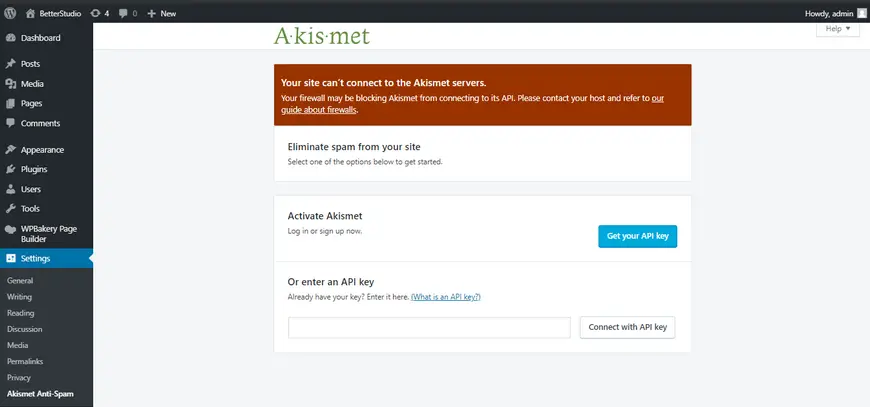

Yoast SEO
Having a WordPress website won’t finish by just installing it. The main task is submitting content and guiding traffic to the website.
If you are after high-quality content and your main goal is to achieve a higher ranking in Google, we recommend installing the Yoast SEO plugin. This plugin allows you to manage the technical aspect of SEO and improve your website gradually.
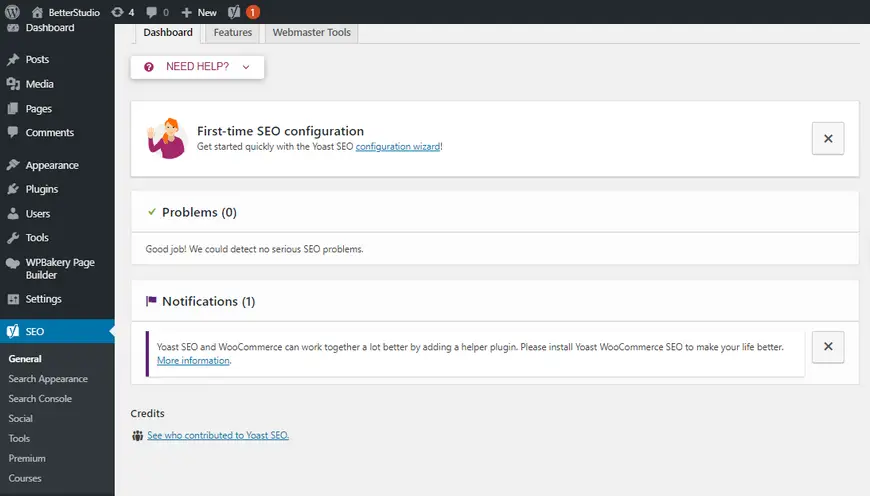

Yet Another Related Posts Plugin
To display related content on your website, The Yet Another Related Posts Plugin is one of the best plugins in the WordPress plugin store. This plugin is available in both free and premium versions. In the free version, you have access to the basic features. For example, displaying pages, posts, post types and etc.
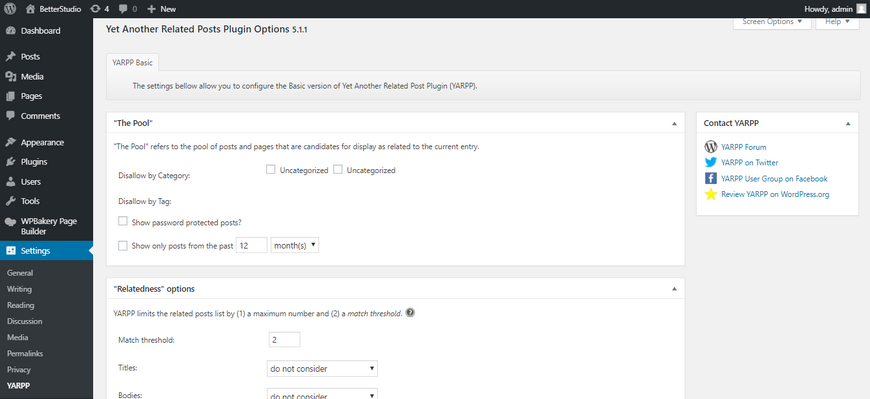

Without a doubt, you are offered many more features in the Pro version.
W3 Total Cache
One of the plugins to increase the website’s performance is the W3 Total Cache plugin. If your website has good traffic, it doesn’t mean that it should have a slow loading time. The W3 Total Cache plugin helps you manage performance issues.


UpDraftPlus
One of the most crucial steps in maintaining WordPress is to backup it every once in a while. Getting a backup is a lengthy process but we suggest you use a WordPress backup plugin. However, by installing the UpDraftPlus plugin you can easily schedule or even manually backup WordPress in a matter of a few minutes.
UpDraftPlus is one of the best plugins you can find in the market. It allows you to upload your backup to any iCloud service you have set it to.
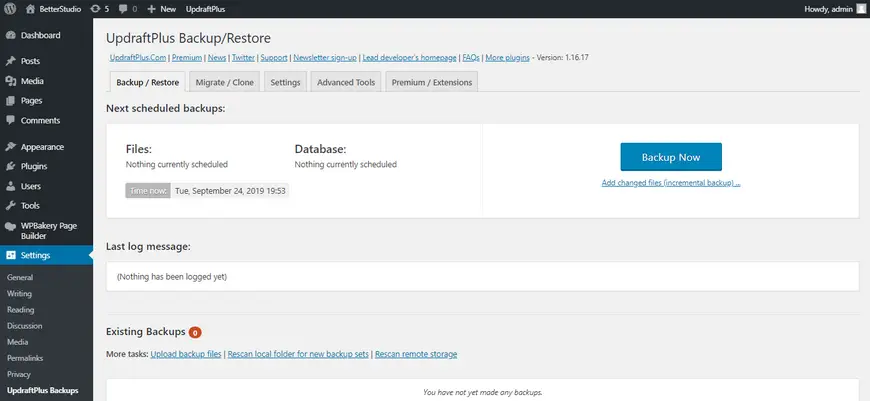

FAQs
In a nutshell, we recommend Bluehost as a WordPress hosting provider. If you want further details, please check our comparison of WordPress hosting providers.
By default, WordPress is installed in English. However, WordPress is an international platform and a powerful team has translated it to different languages. Therefore, you can pick a suitable language for WordPress.
We’ve Explained how to change WordPress language in length. In short, the language of WordPress can be changed in the Settings > General. But what if the language you are looking for isn’t on the list? Don’t worry! You can manually add languages to WordPress.
From your hosting panel open the wp-content folder. Create a new folder in and call it languages. Upload the .mo and .po of your desired language in the folder.
Use this website to download different languages for WordPress. Unzip the downloaded file and extract it in the folder you created. (wp-content/languages)
Then, add the following code to the wp-config.php file:
define(‘WPLANG’,’fr_FR’);
Replace fr_FR with the country code of the language you have downloaded from the website mentioned above. Finally, save the file.
Keep in mind, you can only download languages that have a 100% GlotPress rating.
As mentioned above, by default, WordPress will be installed in the WordPress folder and you may install WordPress in mydomain.com/wordpress by accident.
To remove /wordpress from the website and transfer WordPress to the original domain name, read our previous article.
By default, the webserver should display the index.php file. In Apache web server, use directoryIndex to directly display the index.php file.
The simplest method is to create a new .htaccess file and place it in the WordPress folder. The other method is to configure directives to other files in the webserver.
This error usually occurs when something is wrong in the wp-config file. Follow the steps below to resolve the issue: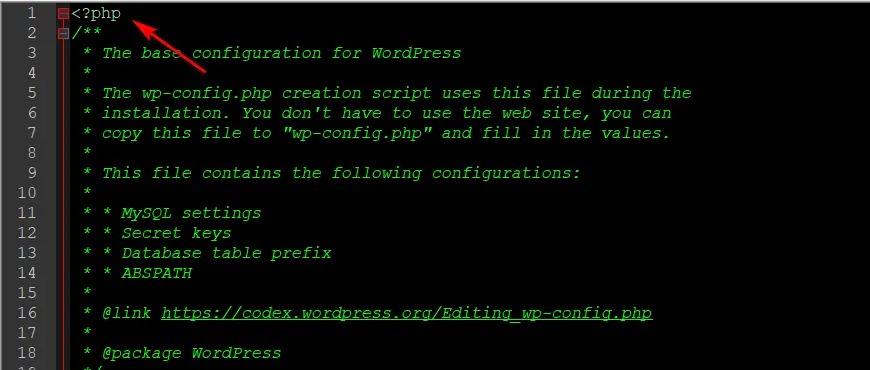

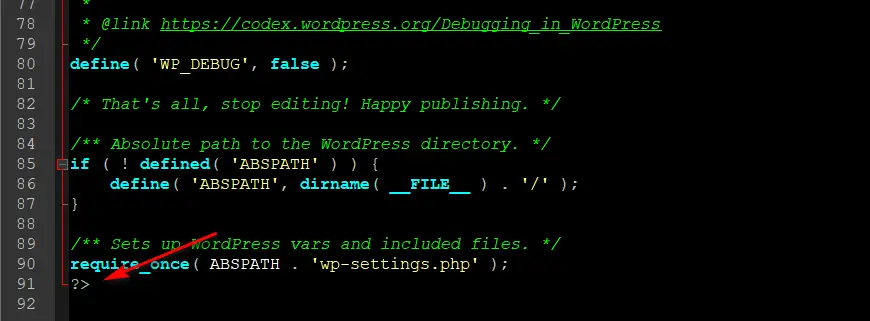

– Download the wp-config.php file.
– Open it in an editor.
– Check the first line, and make sure only the <?PHP tag is there and nothing else.
– Check the last line as well and make sure ?> is there without anything else.
– Regular text editors use Unicode structure. Therefore, make sure it doesn’t add any BOM to the file.
– Save the file and reupload it back to the server and try to open a web page again.
To fix this issue you must manually change the MySQL password. With Shell access MySQL and run the command below:
SET PASSWORD FOR ‘wordpressusername’@’hostname’ = OLD_PASSWORD(‘password’);
But if you don’t have access to Shell, you must run a query in phpMyAdmin. If after running the code above you are still getting the error, change your database password from cPanel.

When you get this error, make sure your web server is configured correctly and also, make sure MySQL runs smoothly and is connected to WordPress.
Often, to fix this error you must check all the configurations in MySQL and web server and make sure everything is configured correctly.



